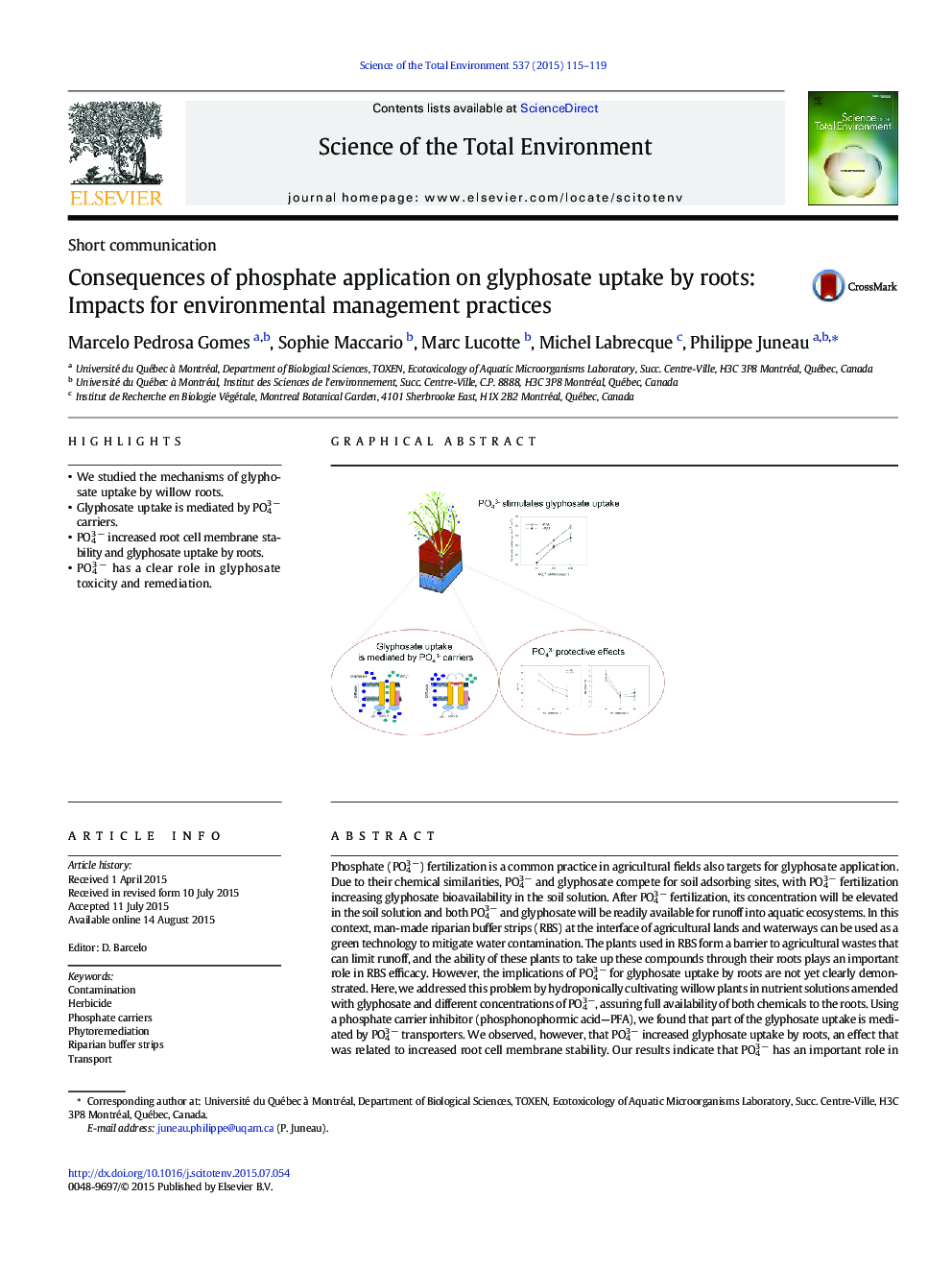| Article ID | Journal | Published Year | Pages | File Type |
|---|---|---|---|---|
| 6325449 | Science of The Total Environment | 2015 | 5 Pages |
â¢We studied the mechanisms of glyphosate uptake by willow roots.â¢Glyphosate uptake is mediated by PO43 â carriers.â¢PO43 â increased root cell membrane stability and glyphosate uptake by roots.â¢PO43 â has a clear role in glyphosate toxicity and remediation.
Phosphate (PO43Â â) fertilization is a common practice in agricultural fields also targets for glyphosate application. Due to their chemical similarities, PO43Â â and glyphosate compete for soil adsorbing sites, with PO43Â â fertilization increasing glyphosate bioavailability in the soil solution. After PO43Â â fertilization, its concentration will be elevated in the soil solution and both PO43Â â and glyphosate will be readily available for runoff into aquatic ecosystems. In this context, man-made riparian buffer strips (RBS) at the interface of agricultural lands and waterways can be used as a green technology to mitigate water contamination. The plants used in RBS form a barrier to agricultural wastes that can limit runoff, and the ability of these plants to take up these compounds through their roots plays an important role in RBS efficacy. However, the implications of PO43Â â for glyphosate uptake by roots are not yet clearly demonstrated. Here, we addressed this problem by hydroponically cultivating willow plants in nutrient solutions amended with glyphosate and different concentrations of PO43Â â, assuring full availability of both chemicals to the roots. Using a phosphate carrier inhibitor (phosphonophormic acid-PFA), we found that part of the glyphosate uptake is mediated by PO43Â â transporters. We observed, however, that PO43Â â increased glyphosate uptake by roots, an effect that was related to increased root cell membrane stability. Our results indicate that PO43Â â has an important role in glyphosate physiological effects. Under agricultural conditions, PO43Â â fertilization can amplify glyphosate efficiency by increasing its uptake by the roots of undesired plants. On the other hand, since simultaneous phosphate and glyphosate runoffs are common, non-target species found near agricultural fields can be affected.
Graphical abstractDownload high-res image (154KB)Download full-size image
